Welcome to a world where the beauty of nature can bloom right within your walls! Whether you’re a budding gardener just starting to explore the wonders of indoor plants or a seasoned green thumb looking to expand your floral horizons, the joy of nurturing flowering houseplants is an experience like no other.
This curated list of the top 10 flowering houseplants promises to transform any room into a vibrant oasis, offering a splash of color and life that can brighten even the dullest of days. These plants are not only visually stunning, but they also come with a host of practical benefits—from purifying the air to boosting your mood, making them a worthwhile addition to every home.
With this guide, you’ll gain the confidence to grow these beautiful plants with ease, armed with expert tips and insights tailored for every gardener. Imagine the satisfaction of watching your indoor garden thrive, bringing joy and a sense of accomplishment to your everyday life.
African Violet (Saintpaulia ionantha)
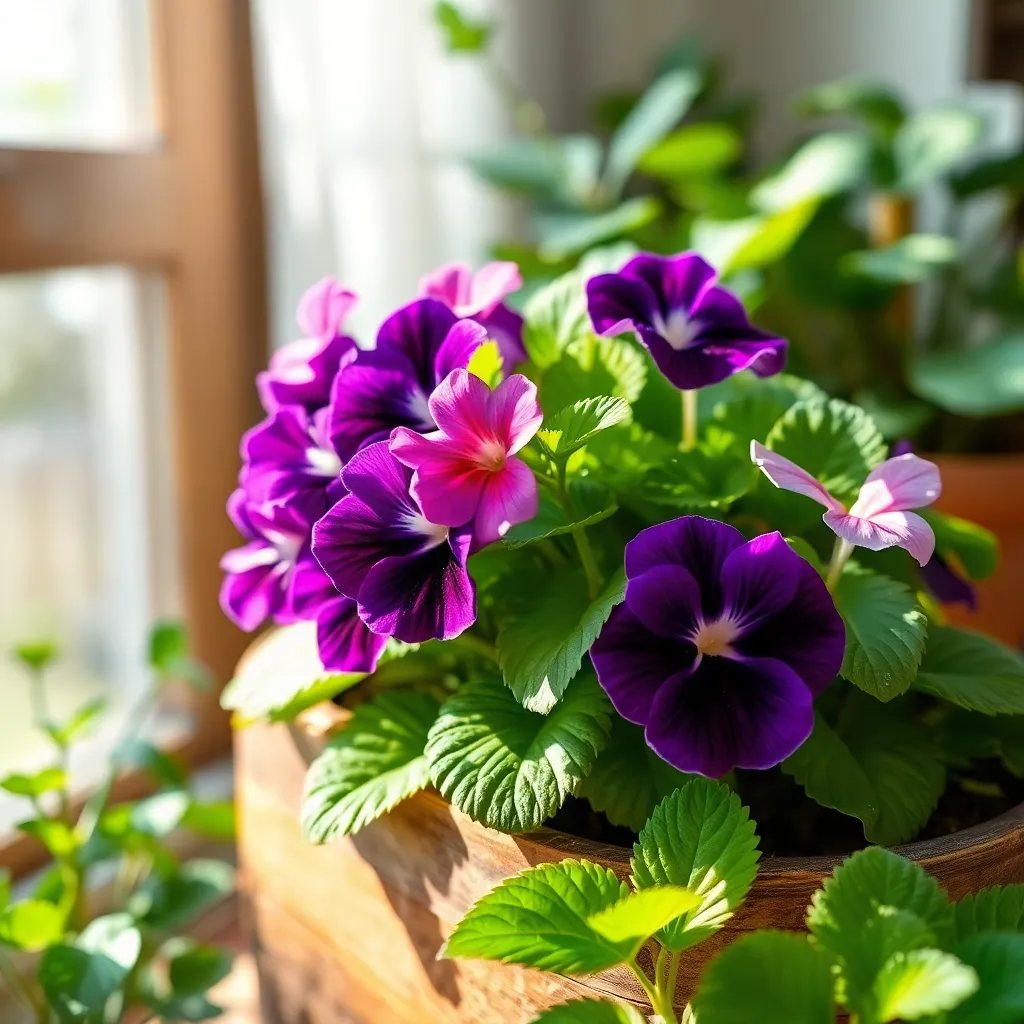
African Violets (Saintpaulia ionantha) are a delightful choice for any room, known for their vibrant blooms and compact size. These plants thrive in indoor environments, making them perfect for both beginner and experienced gardeners looking to add a splash of color to their homes.
To ensure your African Violet flourishes, it’s crucial to provide it with the right conditions. Place your plant in bright, indirect light, as direct sunlight can scorch its delicate leaves.
Watering is another essential aspect of African Violet care. Keep the soil consistently moist but never waterlogged; using room temperature water can help prevent leaf spots and root rot.
For those looking to take their plant care to the next level, consider the type of soil used. These plants prefer a well-draining potting mix, specifically one formulated for African Violets, to support healthy root development.
Fertilizing African Violets can encourage more blooms and healthier growth. Use a balanced, water-soluble fertilizer every 4 to 6 weeks, but be careful not to over-fertilize as this can harm the plant.
With the right care, African Violets can bloom multiple times a year, providing a continual display of beauty. By paying attention to their specific needs, you’ll be able to enjoy these charming plants in any room of your home.
Peace Lily (Spathiphyllum wallisii)
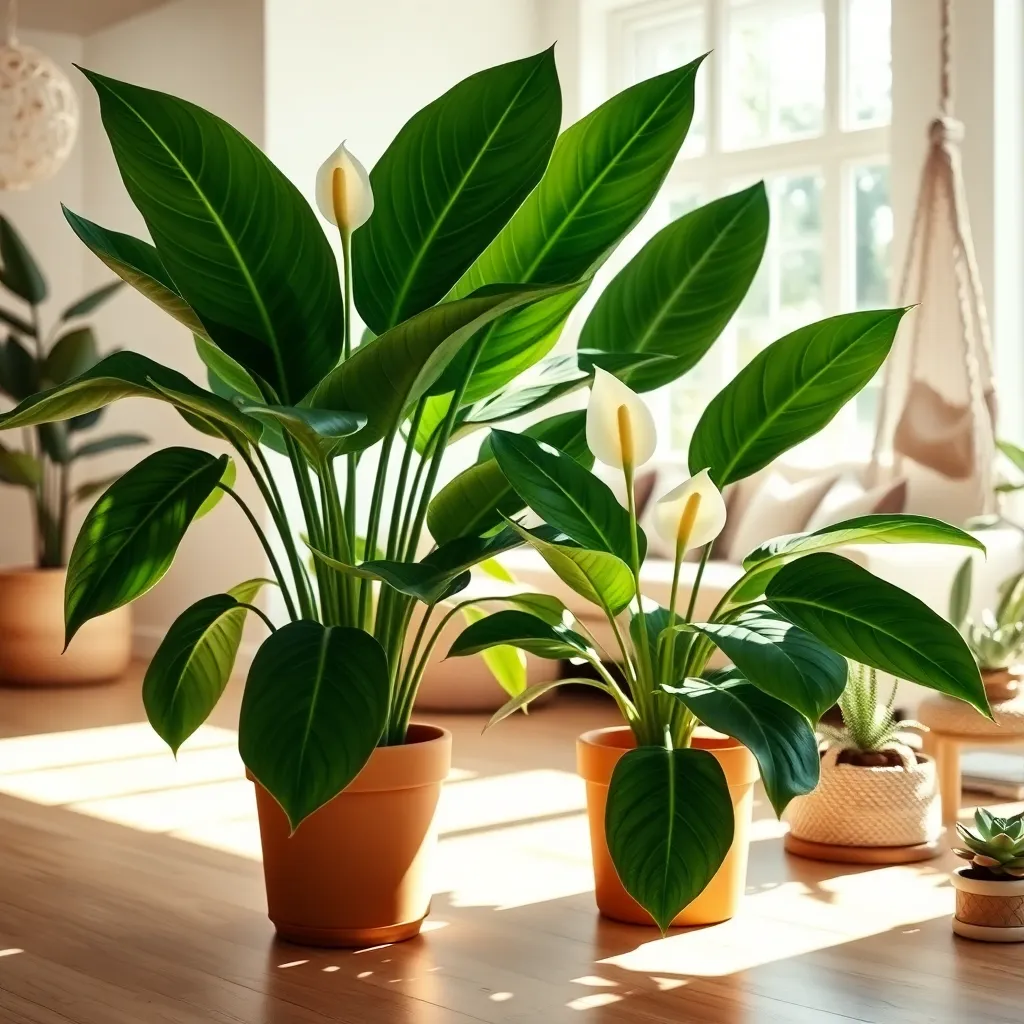
The Peace Lily, or Spathiphyllum wallisii, is a fantastic choice for both novice and experienced indoor gardeners. Known for its lush, dark green foliage and striking white spathes, it adds elegance to any room while being relatively low-maintenance.
This plant thrives in low to moderate light, making it perfect for spaces that don’t receive direct sunlight. For best results, place your Peace Lily near a window with filtered light, and avoid direct sun exposure to prevent leaf scorch.
Peace Lilies prefer consistently moist soil, but avoid waterlogging by ensuring proper drainage. A good rule of thumb is to water your plant when the top inch of soil feels dry to the touch, typically about once a week.
For optimal growth, use a well-draining potting mix rich in organic matter. Enhance your plant care by fertilizing with a balanced, water-soluble fertilizer every six to eight weeks during the growing season.
Anthurium (Anthurium andraeanum)
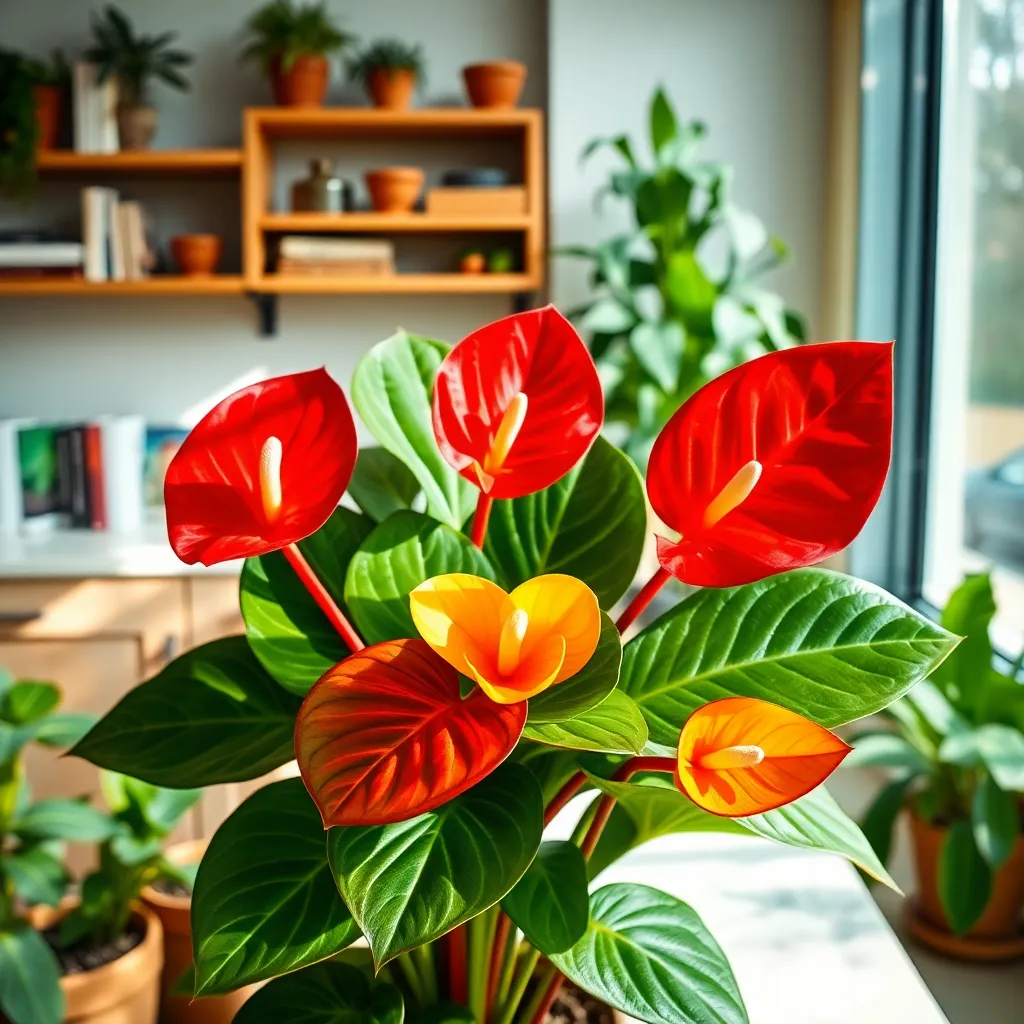
Known for its vibrant, heart-shaped spathes, the Anthurium andraeanum is a splendid choice for any indoor space. This tropical beauty thrives in bright, indirect light, making it perfect for rooms with large windows or filtered sunlight.
To keep your Anthurium healthy, ensure it is planted in a well-draining potting mix, such as a blend of orchid bark, peat, and perlite. Water it moderately, allowing the top inch of the soil to dry out between waterings, to prevent root rot.
Anthuriums appreciate high humidity, so consider placing a humidifier nearby or occasionally misting the leaves. For advanced care, feed the plant with a balanced liquid fertilizer every six to eight weeks during the growing season to encourage lush foliage and vibrant blooms.
Regularly wipe the leaves with a damp cloth to remove dust and keep the plant looking its best. By providing these simple yet effective care measures, your Anthurium will reward you with its stunning flowers and lush green leaves all year round.
Bromeliad (Guzmania lingulata)
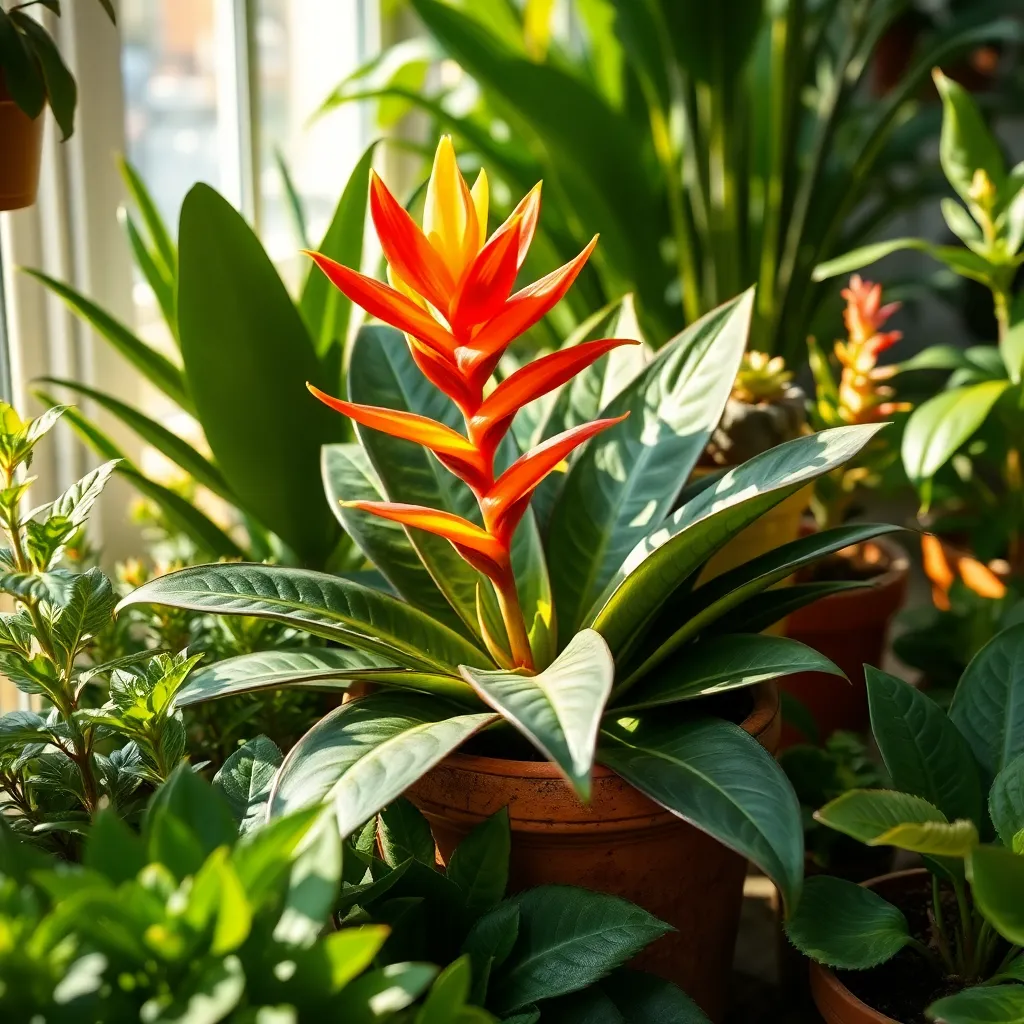
Guzmania lingulata, commonly known as the Bromeliad, is a vibrant addition to any indoor garden, celebrated for its striking flower bracts and lush foliage. This tropical beauty thrives best in bright, indirect light, making it ideal for rooms with filtered sunlight or near an east-facing window.
Watering Guzmania should be done with care; allow the soil to dry slightly between waterings to prevent root rot. As an epiphyte, it’s crucial to keep the central cup, also known as the tank, filled with fresh water, and ensure to empty it every week to avoid stagnation.
For optimal growth, plant your Bromeliad in a fast-draining mix, such as a blend of orchid bark and peat-based potting soil, which mimics its natural habitat. Regularly mist the leaves to enhance humidity, especially in dry indoor environments, as this will help maintain its vibrant look.
Advanced gardeners can experiment with propagating Bromeliads by separating offsets, or pups, from the mother plant once they reach about one-third of its size. Patience is key as these pups may take a few years to bloom, but the process is rewarding and expands your indoor collection.
Orchid (Phalaenopsis spp.)
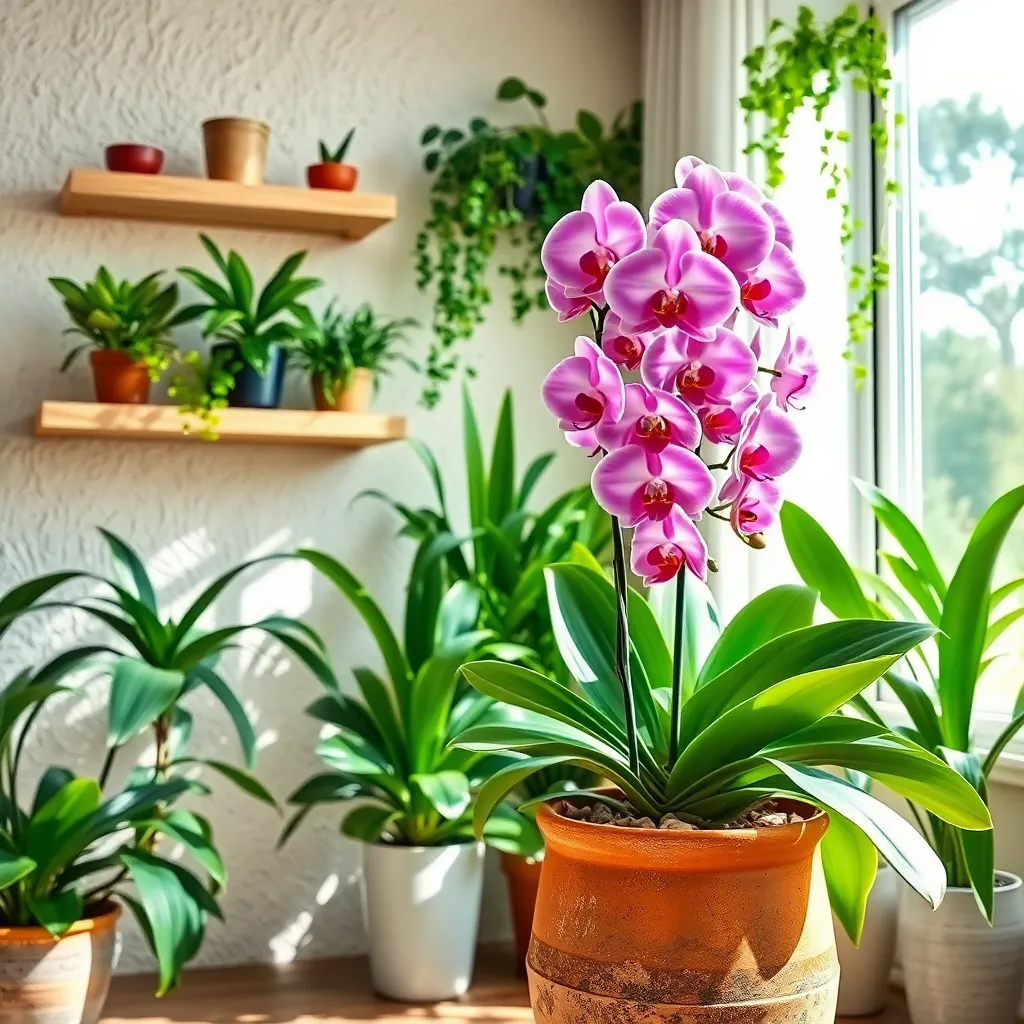
With their exotic appearance and long-lasting blooms, orchids (Phalaenopsis spp.) are a popular choice for brightening up any home. These stunning flowers thrive in indirect light, making them ideal for rooms with filtered sunlight.
For optimal growth, plant your Phalaenopsis orchids in a well-draining potting mix specifically designed for orchids, which often contains bark, perlite, and charcoal. Water the orchids every 1-2 weeks, allowing the mix to dry out slightly between waterings to prevent root rot.
Maintaining the right humidity is crucial for orchids, so consider placing a humidity tray or a small humidifier nearby. To encourage blooming, keep nighttime temperatures slightly cooler than daytime, ideally between 60-70°F (15-21°C).
Fertilize orchids with a balanced, water-soluble fertilizer every two weeks during the growing season and monthly during the rest of the year. Prune spent flower spikes to encourage new growth and keep your orchid looking its best.
Kalanchoe (Kalanchoe blossfeldiana)
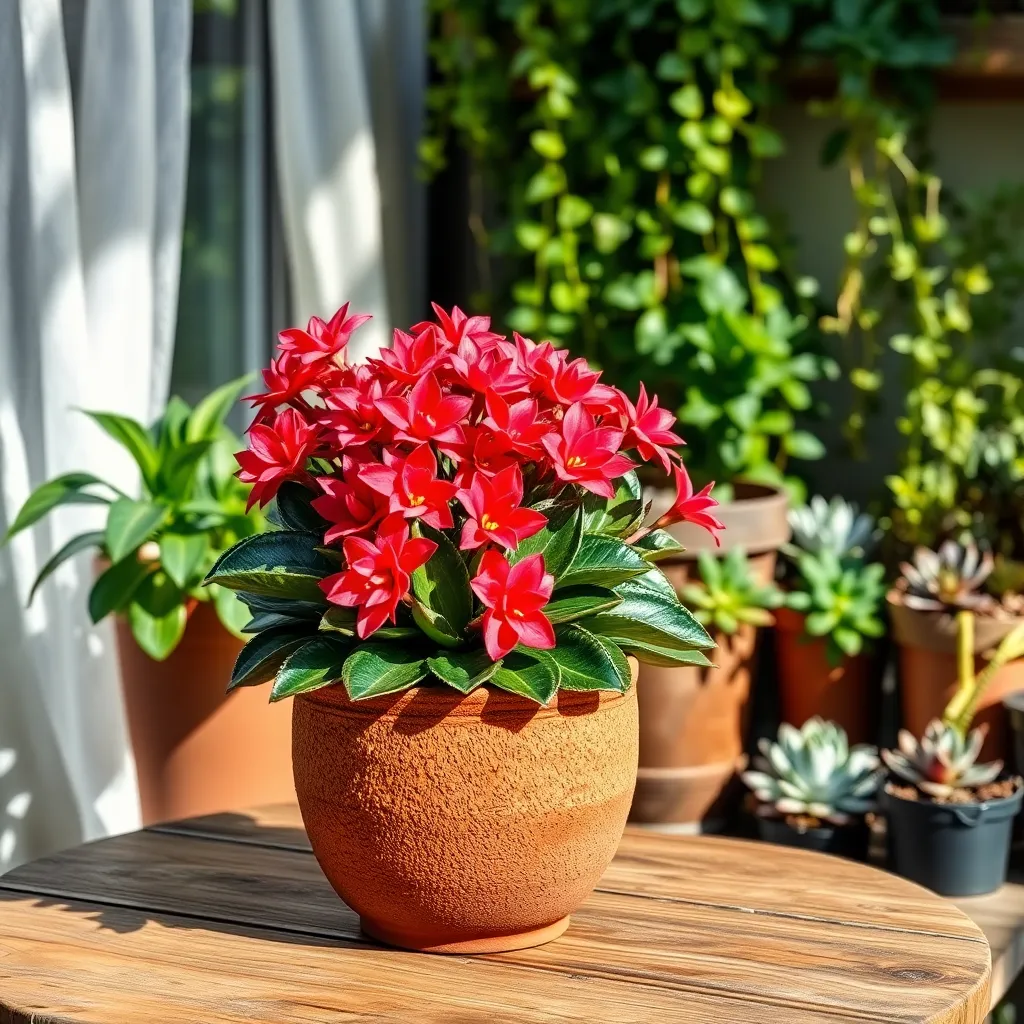
Known for their vibrant clusters of blooms, Kalanchoe blossfeldiana is a delightful addition to any home. These succulents are incredibly easy to care for, making them perfect for both beginners and seasoned gardeners.
To thrive, Kalanchoe requires bright, indirect light, which helps maintain their colorful flowers. Ideally, place them near a south or west-facing window for optimal light exposure.
Watering is straightforward; allow the soil to dry completely between waterings to prevent root rot. A good rule of thumb is to water every two weeks, but adjust based on the humidity of your home.
For best results, use a well-draining potting mix, such as a cactus or succulent blend. Fertilize lightly with a balanced liquid fertilizer once a month during the growing season to enhance blooming.
As a bonus tip, encourage a second bloom by cutting back spent flowers and slightly reducing water in the winter months. This seasonal adjustment mimics their natural environment and promotes a fresh cycle of growth.
Jasmine (Jasminum polyanthum)
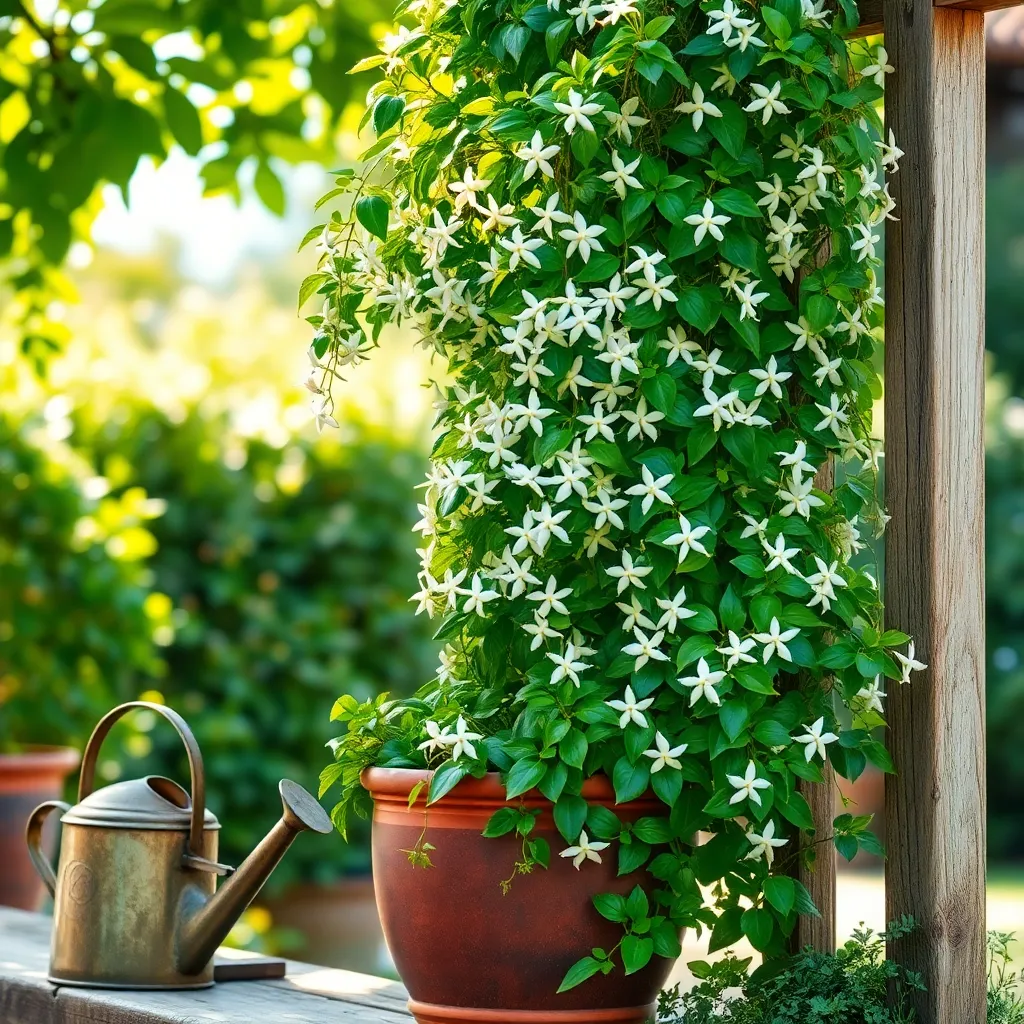
Jasmine (Jasminum polyanthum) is a delightful addition to any home due to its fragrant blooms and elegant vines. It thrives in bright, indirect light and should be kept out of direct sunlight to prevent leaf scorching.
For optimal growth, plant jasmine in a well-draining potting mix rich in organic matter. Water the plant thoroughly when the top inch of soil feels dry, ensuring excess water drains away to avoid root rot.
To encourage lush growth, feed jasmine with a balanced liquid fertilizer every four to six weeks during the growing season. For experienced gardeners, consider training the vines onto a trellis or support to display its cascading beauty.
Jasmine benefits from regular pruning, which helps maintain its shape and encourages more blooms. If you’re in a cooler climate, ensure the plant is kept in a warm room, as jasmine prefers temperatures between 60 to 75°F.
Easter Cactus (Hatiora gaertneri)
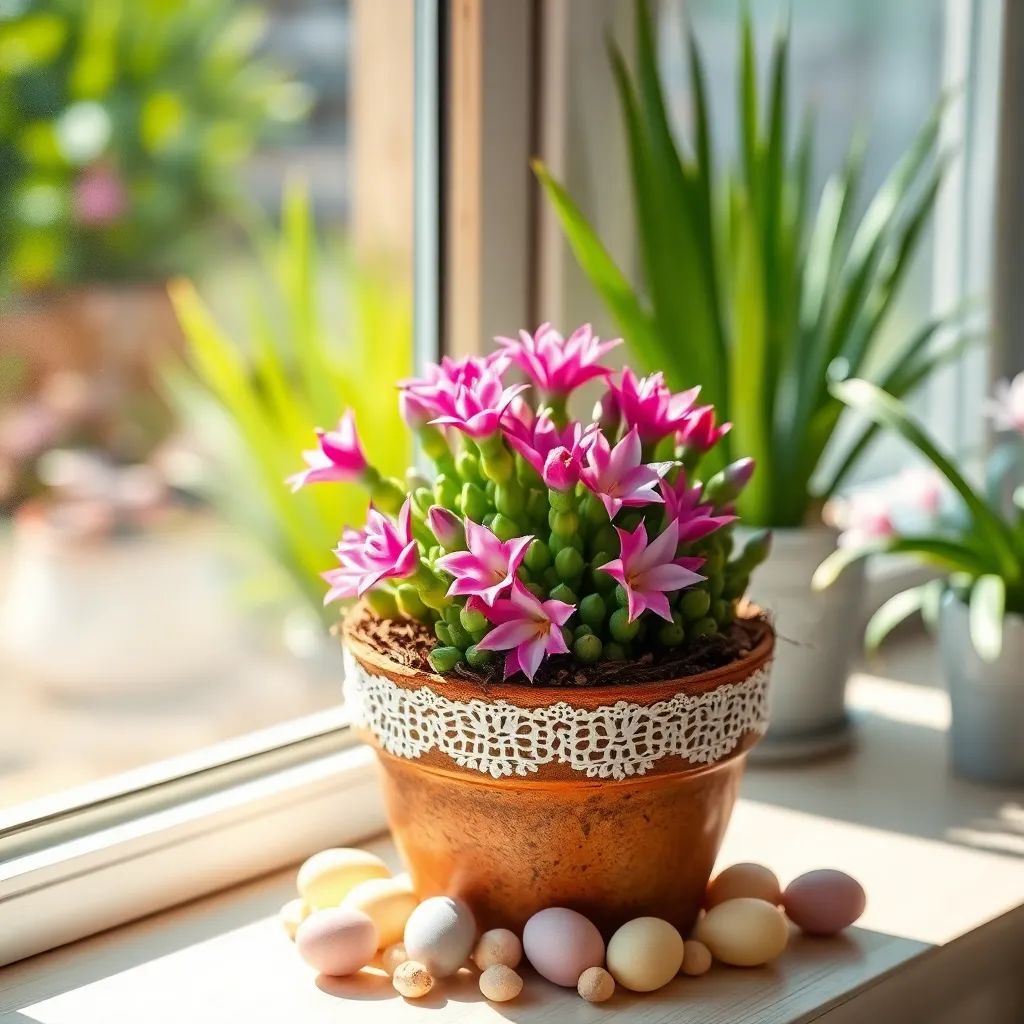
The Easter Cactus (Hatiora gaertneri) is a delightful addition to any indoor garden, renowned for its vibrant blooms that appear around springtime. To encourage these brilliant flowers, place the plant in a well-lit spot but out of direct sunlight, as too much exposure can scorch its leaves.
Use a potting mix that is rich in organic matter and provides excellent drainage, such as a blend of orchid bark, perlite, and peat moss. Water the cactus sparingly, allowing the top inch of soil to dry out between waterings to prevent root rot.
For those looking to advance their skills, consider fertilizing with a balanced liquid fertilizer diluted to half strength every two weeks during the growing season. Encourage blooming by providing cooler temperatures at night, ideally between 50-55°F (10-13°C), which mimics the plant’s native environment.
Repot the Easter Cactus every couple of years in the spring, using a slightly larger pot to accommodate growth. Ensure proper air circulation around the plant to prevent fungal diseases, which can be a common issue in too-humid conditions.
Begonia (Begonia rex-cultorum)
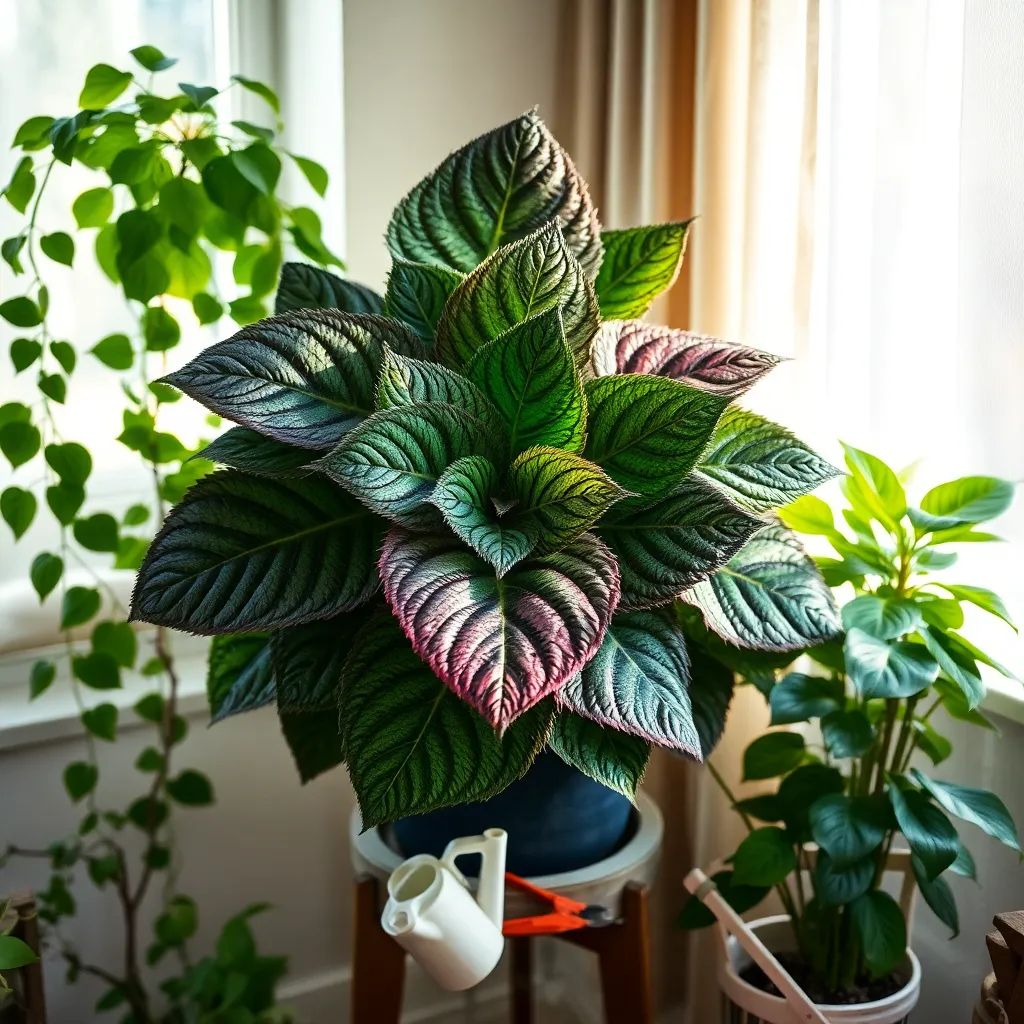
Begonia rex-cultorum, often known simply as Rex Begonia, is a stunning houseplant renowned for its dramatic foliage. Its leaves come in a variety of colors and patterns, making it a standout choice for adding visual interest to any room.
To thrive, Rex Begonias require a well-draining potting mix rich in organic matter. A mix of peat, perlite, and vermiculite is ideal, providing the right balance of moisture retention and drainage.
It’s crucial to water your Rex Begonia cautiously, allowing the top inch of soil to dry out before the next watering. Overwatering can lead to root rot, so always ensure the pot has drainage holes to prevent water from accumulating.
For optimal growth, place your Rex Begonia in a location with bright, indirect light. Direct sunlight can scorch the leaves, while too little light can reduce the intensity of the plant’s vibrant colors.
Impatiens (Impatiens walleriana)
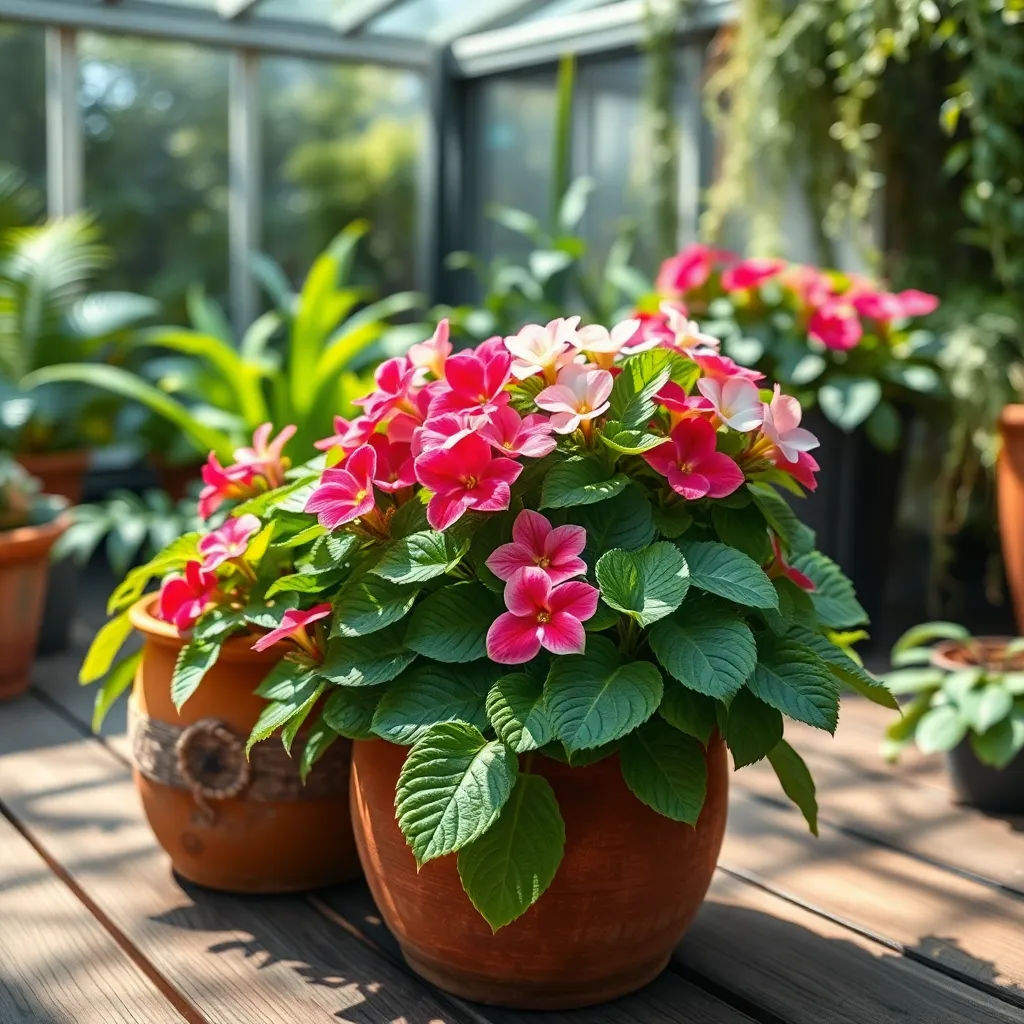
Impatiens (Impatiens walleriana) are a popular choice for indoor gardens, known for their vibrant blooms and easy-care nature. These flowering houseplants thrive in areas with indirect light, making them perfect for rooms with filtered sunlight.
To encourage lush growth, plant your impatiens in a well-draining potting mix with plenty of organic matter. Water them consistently, aiming to keep the soil evenly moist but not waterlogged, especially during the growing season.
Regular feeding can significantly enhance their blooming potential. Use a balanced, water-soluble fertilizer every two weeks during spring and summer to support their energy needs and promote continuous flowering.
For more seasoned gardeners seeking to maximize growth, consider pinching back the stems occasionally. This simple technique encourages bushier growth and more abundant blooms, ensuring your impatiens remain a stunning focal point in any room.
Conclusion: Growing Success with These Plants
In exploring the vibrant world of flowering houseplants, we’ve uncovered the top 10 botanical companions that can enhance harmony in any room: the healing peace lily, communicative African violet, resilient orchid, nurturing jasmine, adaptable begonia, trust-building hibiscus, rejuvenating geranium, vibrant anthurium, enduring Christmas cactus, and the positive energy of the bromeliad. Each plant offers a unique lesson in fostering healthy relationships, from building resilience and adaptability to nurturing communication and trust.
As an actionable next step, consider introducing one of these plants into your home to serve as a daily reminder of the principles you want to cultivate in your relationships. Whether you’re nurturing a new connection or strengthening a long-lasting bond, let these plants inspire you to actively engage and grow.
Remember, this article is your go-to guide for relationship enrichment through nature’s beauty. Bookmark it for future reference to revisit these insights whenever you need a boost of inspiration.
Looking ahead, embracing these natural allies can lead to flourishing relationships rich with empathy, understanding, and joy. Empower yourself to take action today, and watch your relationships bloom into their fullest potential.
